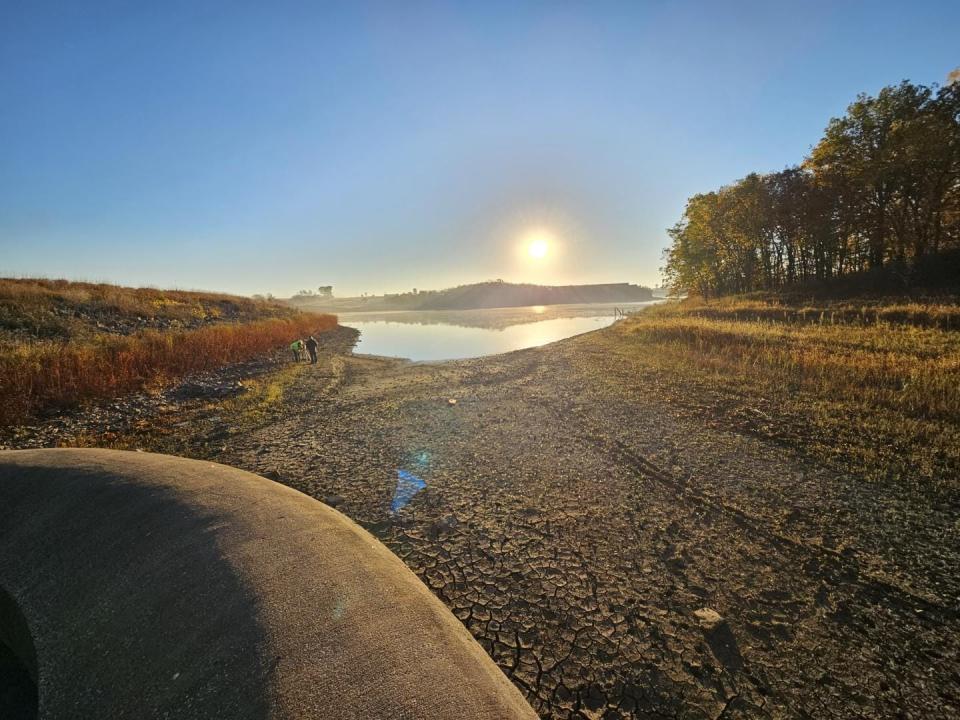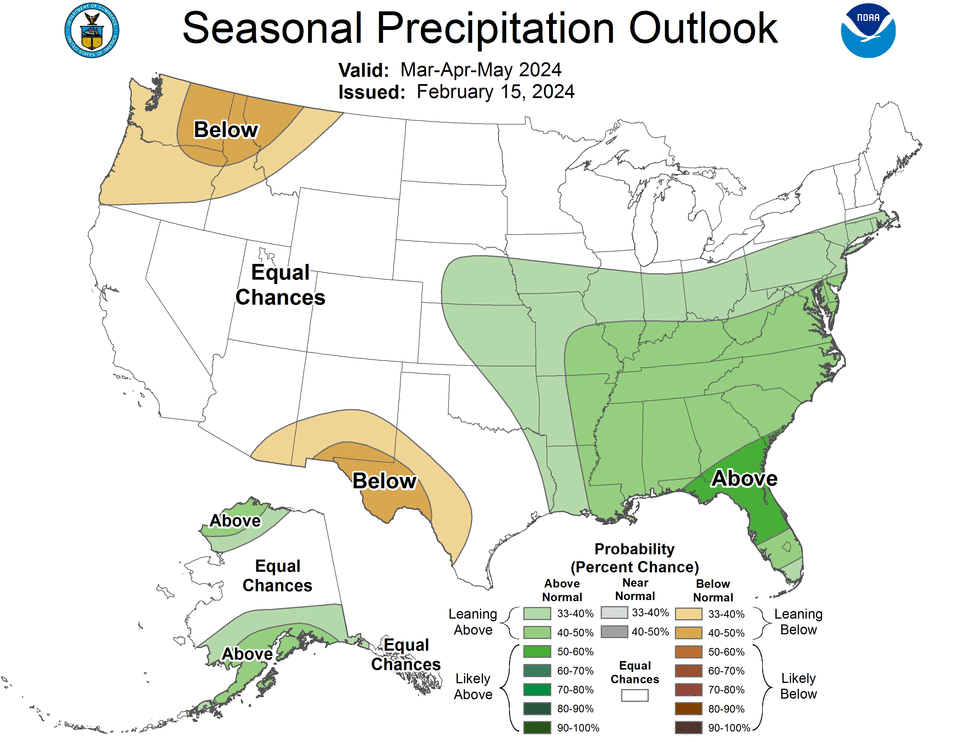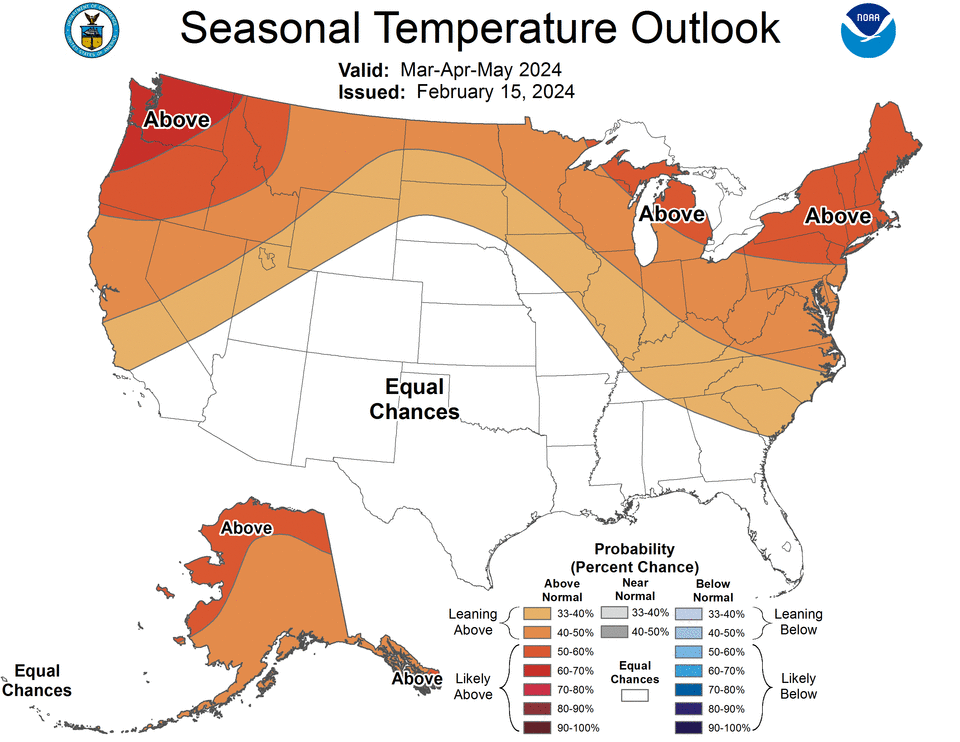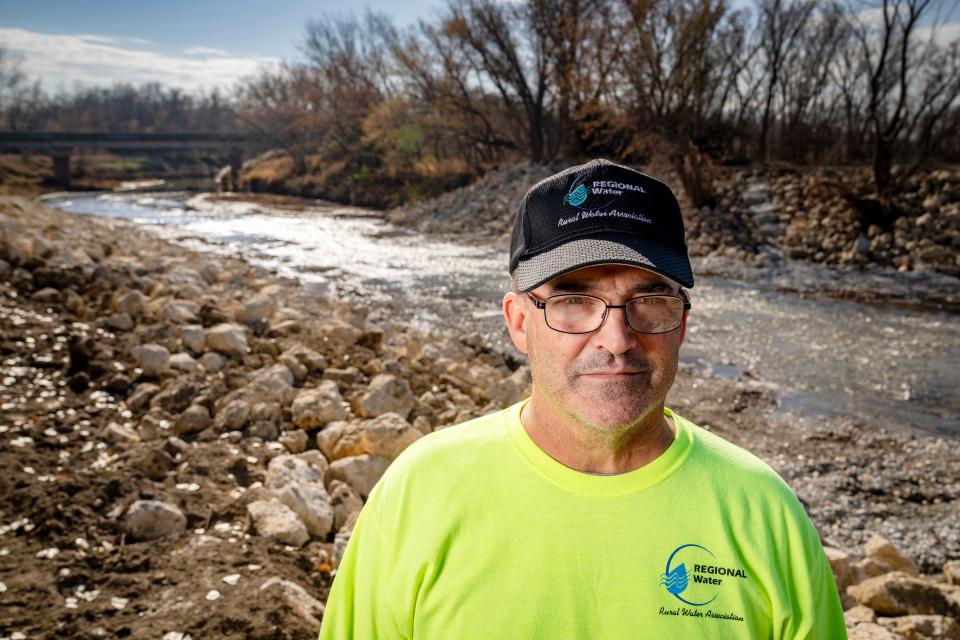Water-supply issues in some Iowa cities continue after disappointing winter precipitation
Despite its dwindling reservoir amid Iowa's continued drought, Osceola will open its aquatic center and water its municipal golf course greens this summer, although it is taking some creativity to accomplish those goals.
Another Iowa public water supply experiencing drought-related supply issues, the Regional Water Rural Water Association in Avoca, has seen an improvement the water availability in its wells, but has also experienced increased demand, placing it in “yellow” alert status and asking its customers to conserve.
The moves come as the Iowa Department of Natural Resources notes there has been little progress since the end of January in alleviating Iowa's ongoing drought, now approach four years in duration.
More: Des Moines Water Works sees record demand, warns of possible water shortage this year
"A very dry February has wiped out much of the benefit received from the wet January. The encouraging trend that started the winter has not continued,” Tim Hall, the DNR’s hydrology resources coordinator, said in a March 7 update. “March through June are critical months for water resources in Iowa, and normal to above normal rainfall is critical this year especially.”
Despite that concern, the DNR has approved Osceola's request to move about 4 million gallons from two city water bodies, Grade Lake and Q Pond, to West Lake, the reservoir that supplies the city's water. Moving the water is still contingent on testing to ensure there are no toxins present, in the water to be transferred said Osceola Mayor Thomas Kedley.
Uncertainty surrounds Osceola reservoir's outlook, but boost is possible

New drone video from the city shows West Lake's continued decline, and the decision to open the Fern Underwood Family Aquatic Center has been controversial. The Osceola City Council voted 3-1 in February to not open the pool this summer, then responded with a 5-0 override when Kedley vetoed that decision.
Ultimately, the decision to proceed with opening the pool came after the Osceola Water Board of Trustees granted authority to the council to open the park if it deemed it to be critical to the “general welfare of the community.”
Kedley said he agreed with the council’s initial vote, but vetoed the measure because the pool was scheduled for renovation to begin March 1 and that the project would require water for the sealing process. He said the veto was intended to provide more time for the pool work to begin.
Being able to move 4 million gallons from the two smaller lakes to West Lake will offset the water usage needed for the aquatic center and golf course, Kedley said.
Also being investigated is the feasibility of using water from a 9-acre, 50-foot deep quarry near town, Kedley said, as is the possibility of using “gray water,” the treated effluent from the city's wastewater plant. The DNR is considering an earlier request by the city to use the treated water to help bolster West Lake.
The lake currently is about 7 feet below its normal level. The water board is, among other measures, prohibiting outdoor water use except for fire and health hazards and restricting commercial use that is not essential in providing products or services.
Both Kedley and Water Superintendent Brandon Patterson said the Osceola community has complied with requests to reduce water usage.
Kedley said the local hospital and the city's Hormel meatpacking plan have made big cuts in usage and "our citizens have gone above and beyond to conserve water.”
Will summer live up to wetter-than-normal forecast?
The next emergency stage could kick in if the West Lake water level drops another 2 feet, at which time the mayor would be asked to issue an emergency proclamation and bottled water would begin to be distributed. Another 3 feet of decline would trigger a request by Clarke County Emergency Management for aid from the state.
Patterson said the biggest concern is the onset of summer. While the normal draw for water supply is 1 million to 1.1 million gallons a day with a peak day of 2 million gallons last summer, the real threat could come if, as the lake water evaporates, rain is insufficient to replenish it.
The three-month forecast for March through May by the National Weather Service calls for a 40%-50% chance of above-normal precipitation in the southern half of Iowa, but also a 30-40% chance of above-average temperatures.


West Lake currently has a safe withdrawal capacity of 800,000 gallons a day with a projected daily demand of 2.8 million gallons a day in 20 years.
Both Kedley and Patterson said the long-term solution for Osceola is construction of a new, 800-acre reservoir that has been tied up in red tape for decades but is slowly moving forward again.
Avoca utility pins hopes on new pipeline

Like Osceola, the Regional Water Rural Water Association in Avoca has had somewhat of a roller coaster this winter.
The association built a riffle dam on a branch of the Nishnabotna River to raise the water level and recharge the shallow aquifers that feed the district’s wells. An extreme cold snap in January froze ponds, forcing some livestock producers to pump water from the district. In addition, pent-up demand for washing farm equipment quickly offset the increase in available water, said Tom Kallman, general manager of the district.
After being able to briefly lift conservation effort in December, the district had to restore its yellow-level advisory in January, said Kallman.
“We sold more water in January than any other month in our 52-year history and with February unseasonably warm, it didn’t get much better,” he said.
Help is on the way in the form of an 18-mile line from Council Bluffs capable of providing 400,000 gallons of treated water a day.
The Regional Water Rural Water Association serves over 2,600 customers in Shelby, Audubon, Cass, Harrison, and northern Pottawattamie Counties.
Kallman said the pipeline should be bid in the next six to eight weeks, with construction beginning soon after.
As in Osceola, Kallman said customers in his district have provided “tremendous support” in cutting usage.
“But the real solution is rain to get water back down into the water table," he said. "In the meantime, the best we can do is plan for the worst and hope for the best.”
This article originally appeared on Des Moines Register: Dry winter means continued water-supply issues for some Iowa cities

